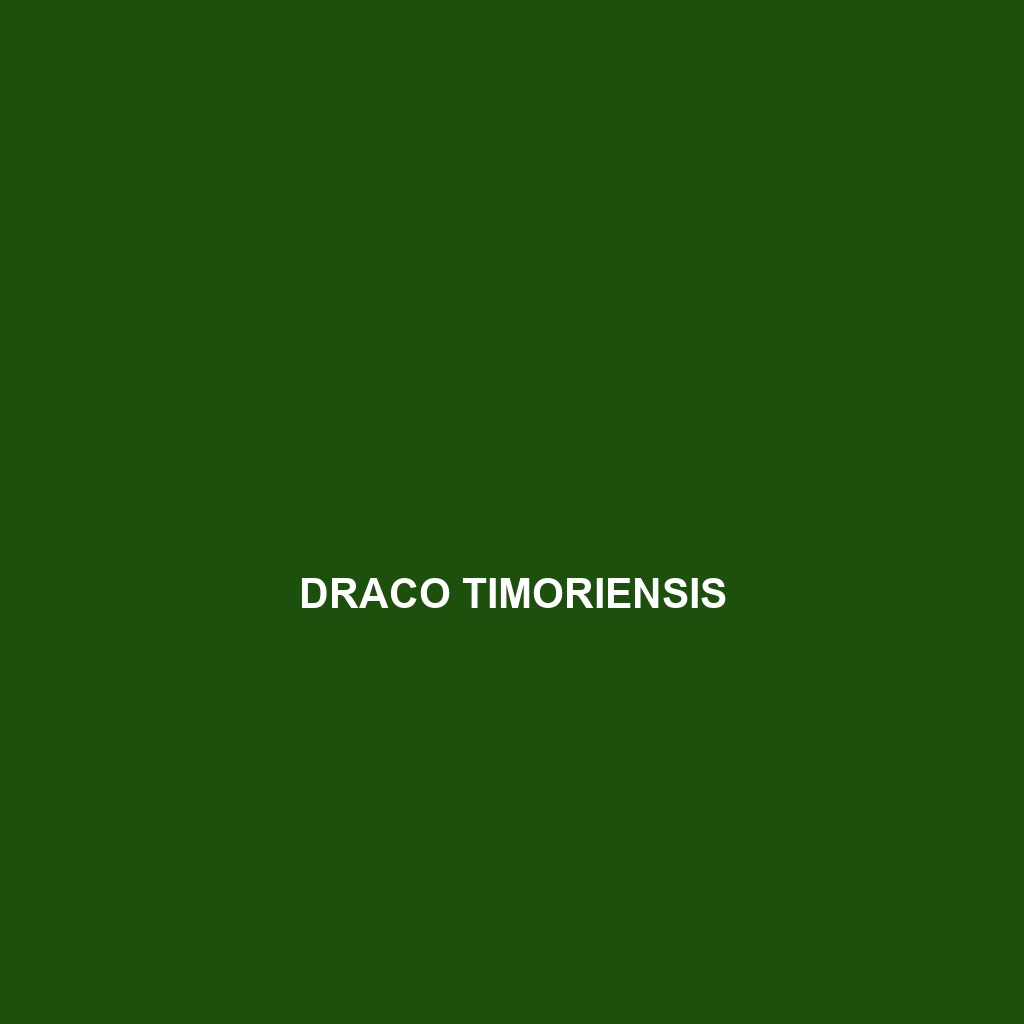Common Name
Draco taeniopterus
Scientific Name
Draco taeniopterus
Habitat
Draco taeniopterus, commonly known as the flying lizard or Draco lizard, primarily inhabits the moist tropical and subtropical rainforests of Southeast Asia, particularly in countries such as Malaysia, Thailand, and the Philippines. This species is well adapted to arboreal living, often found gliding between trees, which it does from high canopies where it can leverage the dense vegetation for camouflage and protection against predators. The warm, humid climate of its habitat allows Draco taeniopterus to thrive, as it requires the moisture-rich air and abundant vegetation for survival. These environments not only provide the necessary food resources but also serve as suitable nesting sites, as female Draco lizards lay their eggs in tree hollows or leaf litter, ensuring they are hidden from potential threats.
Physical Characteristics
Draco taeniopterus exhibits several unique physical characteristics that distinguish it from other reptilian species. Typically, these lizards reach a length of 6 to 10 inches, including their long tails. They possess a distinctive, flattened body shaped like a kite, which enhances their gliding ability. The most striking feature is their elongated ribs that extend outwards to create a wing-like structure covered with a colorful flap of skin called a “throat flap” or “dewlap.” This dewlap can be expanded during courtship or territorial displays, showcasing vibrant hues that can range from yellow to blue, serving both to attract mates and deter rivals. Their coloration aligns with their rainforest habitat, often adopting shades of green, brown, or gray to remain inconspicuous among the foliage, further emphasizing their adaptive prowess.
Behavior
The behavior of Draco taeniopterus is notably fascinating, particularly its gliding ability. These lizards possess a gliding membrane that allows them to soar distances of up to 10 meters (approximately 33 feet) between trees, using their limbs for stabilization and control. They are primarily diurnal, engaging in social interactions during the day, especially during mating seasons where males will display their dewlap and perform elaborate courtship rituals. Although they are not strictly territorial, male Draco taeniopterus will defend their chosen gliding paths and basking spots. These lizards can also exhibit some nocturnal behavior; however, they are mostly active during daylight hours, basking in the sun to regulate their body temperature.
Diet
Draco taeniopterus is predominantly insectivorous, feeding primarily on ants, termites, and other small insects found on the foliage surrounding their habitat. They possess specialized feeding habits, using their long, sticky tongues to capture prey quickly. Their diet is crucial for maintaining the balance of insect populations within their ecosystem. This insect-eating behavior underscores their role as natural pest controllers, making them an ecological asset. The ability to glide allows them to access different levels of the canopy efficiently, enabling them to search effectively for food across the upper layers of their environment.
Reproduction
The reproductive cycle of Draco taeniopterus is characterized by seasonal breeding during the wet season, which aligns with the availability of food and suitable environmental conditions. After a brief courtship period complete with displays of their distinctive dewlaps, the female chooses a mate and lays a clutch of 2 to 5 eggs. These eggs are generally deposited in rotting wood or under leaf litter where the temperature and humidity are optimal for incubation. The incubation period lasts about 60 to 75 days, after which the hatchlings emerge fully formed and capable of gliding. Upon hatching, the young lizards receive no parental care, as they are independent and must fend for themselves from an early age.
Conservation Status
The conservation status of Draco taeniopterus is currently classified as of “Least Concern” according to the IUCN Red List. However, habitat loss due to deforestation and urbanization remains a significant threat to their populations. Conservation efforts are in place to preserve their rainforest habitats, particularly in regions where logging and land development are encroaching. Additionally, environmental organizations are working to raise awareness about the importance of preserving biodiversity within Southeast Asian forest ecosystems, which is vital for the survival of species like Draco taeniopterus.
Interesting Facts
One notable fact about Draco taeniopterus is its remarkable ability to glide. They can maneuver through the air with impressive agility, using their limbs and tail to steer. Furthermore, their unique throat flap not only plays a role in mating displays but also can regulate body temperature. These fascinating adaptations allow the Draco lizard to thrive in its arboreal niche and serve as a subject of interest within herpetology.
Role in Ecosystem
Draco taeniopterus plays a significant ecological role within its environment. As an insectivore, it helps to control insect populations, thus maintaining the balance in its ecological community. Additionally, their presence in the forest canopy supports the health of the forest ecosystem. They contribute to pollination indirectly by aiding in the seed dispersal of various plants through their feeding habits. Their ability to glide also impacts the dynamics of the forest layer, influencing predator-prey interactions throughout the canopy.
